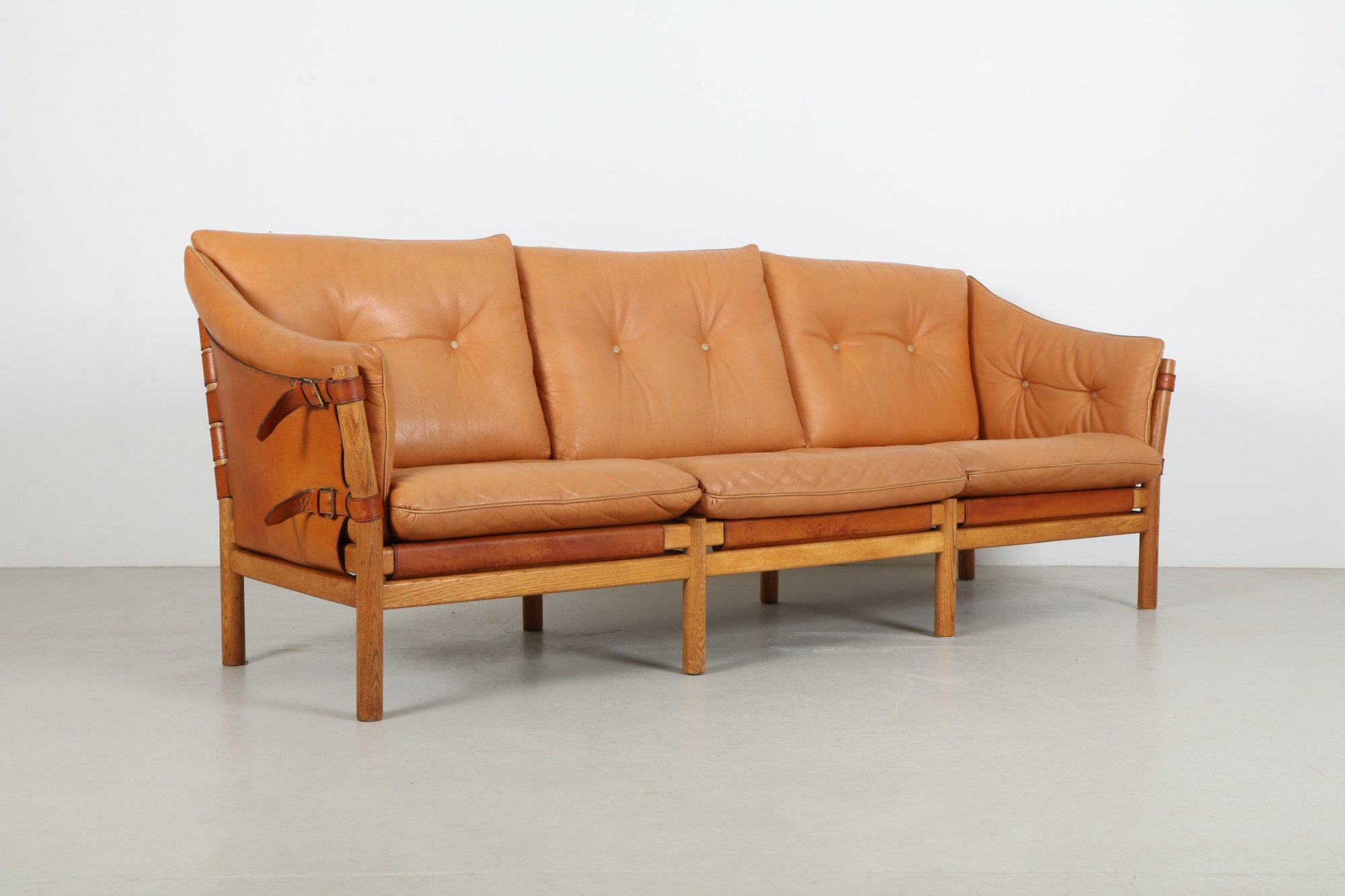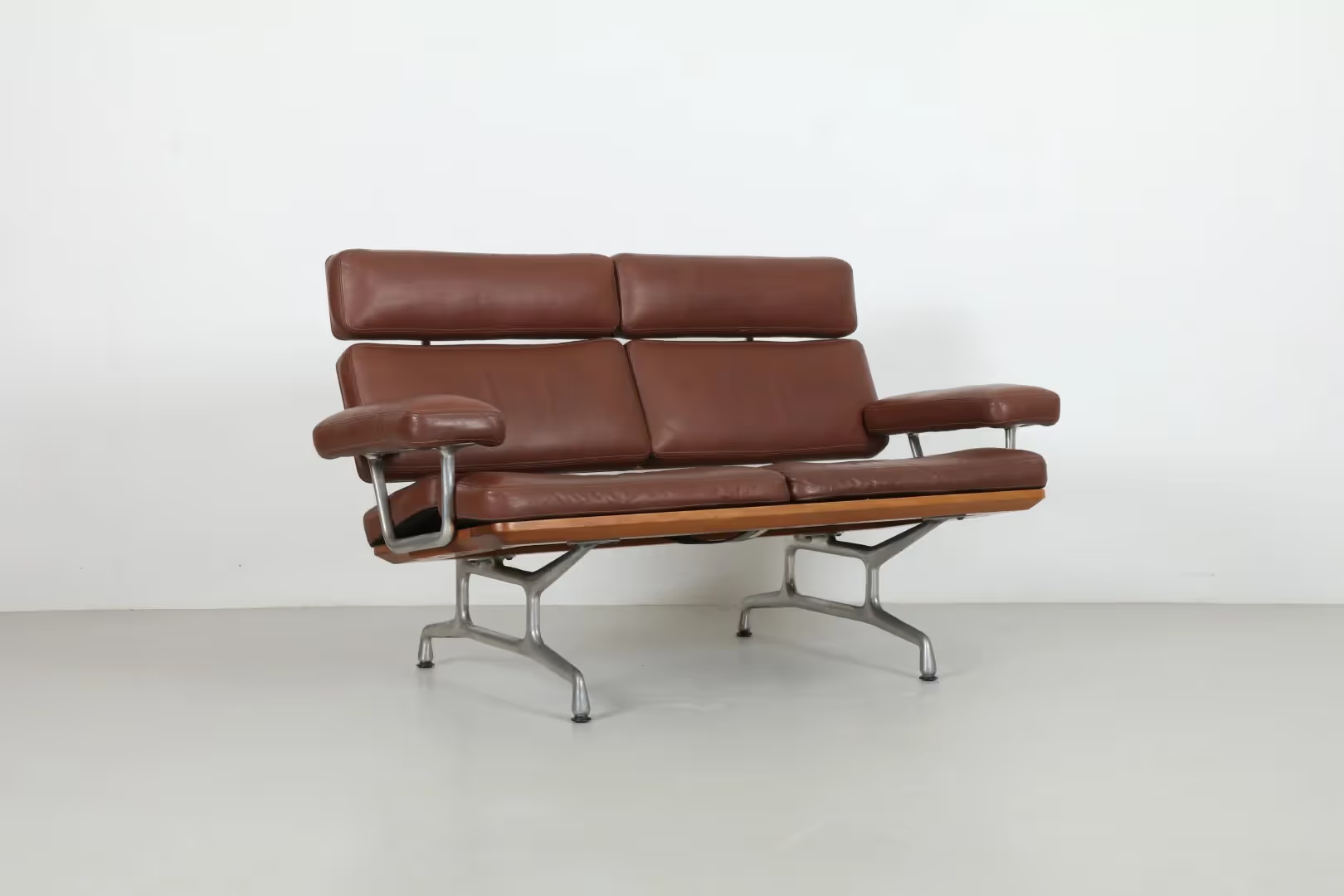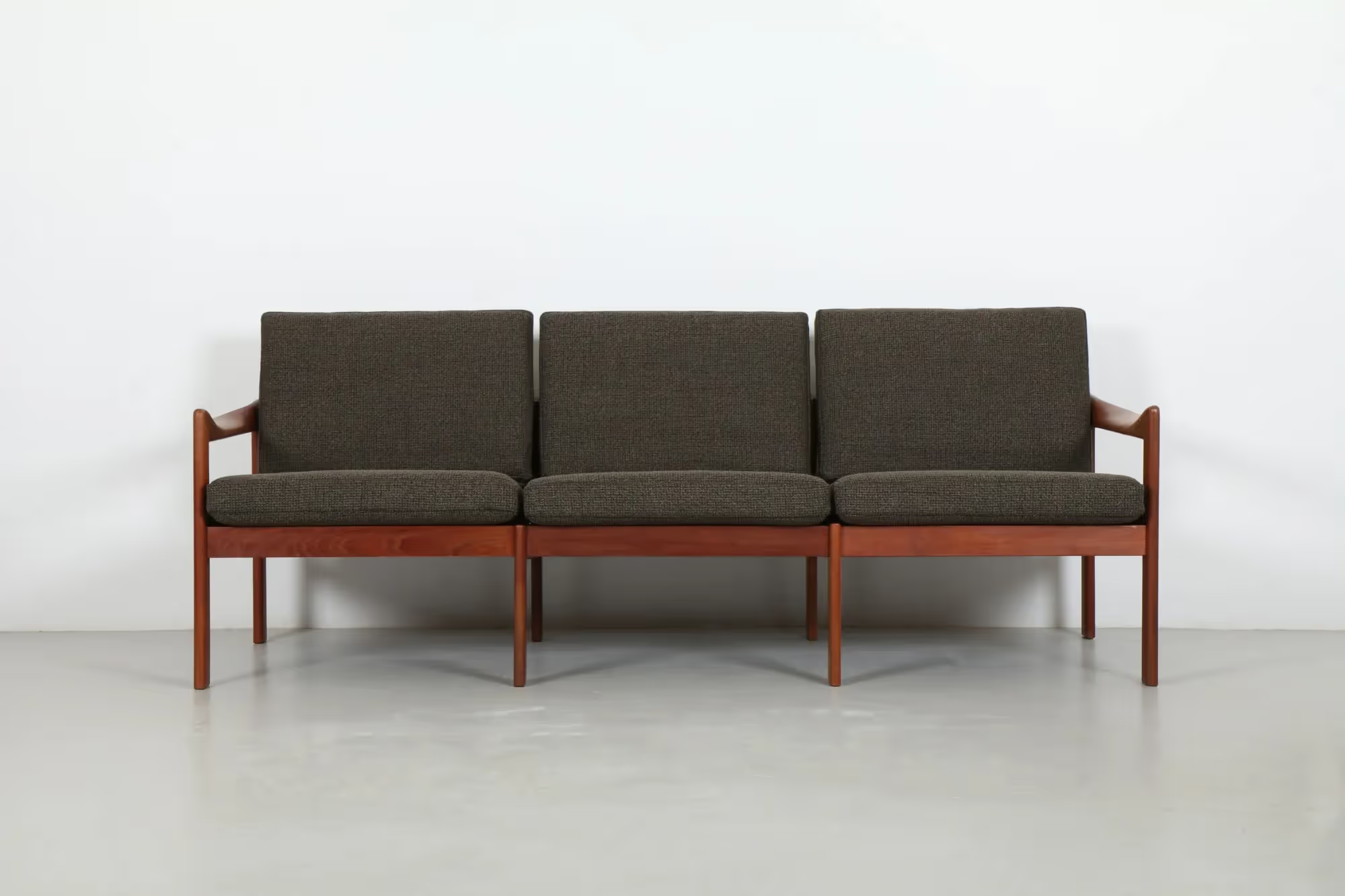Memorable 1950s Daybed Sofa by Maple Furnishing
Sleek, low-lines and simplicity of style define this deluxe solid oak sofa. A generous chaise sofa bed is supported by an open backrest on splayed hind legs and finished with two drawers.
The elegance of form is enhanced by vibrant blonde oak and plush new upholstery. We love the long, hyper extended platform base and the simple elegance of form. This is a stunning piece that will turn heads in any modern interior.
Each piece is checked and carefully hand restored at our Kingsland studio workshop. Our focus is preserving the character and patina of the design while ensuring it displays beautifully in a contemporary interior...
Each piece is checked and carefully restored at our Kingsland studio workshop. Our focus is preserving the character and patina of the design while ensuring it displays beautifully in a contemporary interior.
- Joints checked and reglued
- Timber cleaned and stains removed
- Veneer repairs if needed
- Surfaces polished / refinished
Our full collection is showcased at our Eden Terrace gallery. We have parking available beside the building and would love to see you.
All pieces are available for collection in person from our Eden Terrace gallery. We are also happy to provide a quote for delivery throughout New Zealand.
Please enquire for delivery options.
Memorable 1950s Daybed Sofa by Maple Furnishing
GOOD FORM, 86 Newton Rd, Eden Terrace, Auckland.
Maple Furnishing was founded in Auckland in 1914 and by the 1950s the company had distinguished itself as one of the leading department stores for contemporary furniture. The Maples flagship store was located in upper Karangahape Road on the corner of Symonds St but the post-war boom lead to expansion throughout the country.
In the 1950s the company brought on avant-garde European immigrant architect Henry Kulka to design new retail destinations in the modern international style. This collaboration led to the creation of bold new Maple stores in Hurstmere Rd, Takapuna and Lower-Hutt in Wellington. Kulka's buildings featured generous high stud interiors with dramatic floor to ceiling glass window frontages. It was an exciting step away from the traditional, dark and overstuffed furniture stores that New Zealanders were accustomed to.
While the Maples stores showcased a bold modern direction in architecture, the furniture offered inside catered mostly to the tastes of a conservative audience. At the time, the majority of Kiwi furniture buyers may have been inspired by the modern lifestyles promoted in contemporary home and living magazines but when it came to spending their hard earned dollars they preferred a more conservative, traditional and often colonial style for their lounge.
That didn't stop Maples from showcasing contemporary designs in the latest international styles. The stores would often present inspiring interiors influenced by leading international designers. From the lavish Italian modern style of the 1950s to furniture influenced by Danish Designer Finn Juhl, the store promoted collections that would engage and motivate a local audience to push the boundaries of design in their homes.
A high point in the modern furniture offered by Maples was the inclusion of Australian designer Grant Featherston and his celebrated 'Contour' series of the mid 1950s. Featherston's designs were produced locally under license and sold surprisingly well, this was influential in advancing modern alternatives to traditional furniture. The physical lightness of the Featherston designs allowed the Maples storefront designers to easily suspend chairs in mid-air which was a real draw card to the retail windows.
Maples was also actively involved in promoting contemporary design throughout the country. The company would have yearly furniture design shows and also highlight in-house designs at fun public events like the Winter Show. Maples furniture can be seen alongside designs from John Crichton, Imi Porsolt, Michael Brett and Group Architects in the 1952 'Art and Design Exhibition' making a significant contribution to the early design movement in New Zealand.

.svg)
.svg)













